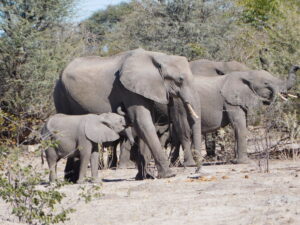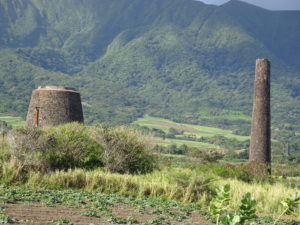 Traveling seems to be done for the year. At least mostly (there might be one short overnight trip squeezed in before New Years). Enough to look back on the year in a traveler’s life. You can see the 2023 recap and 2022 recap by clicking on the links in this sentence. For the last several years I’ve included on my list of goals to visit at least 5 new countries and territories during the year. “Country” is the official United Nations designation, while “territory” encompasses those countries that are betrothed one way or another to some archaic monarchical system (e.g., Aruba is an “island country” but also a “constituent country in the Kingdom of the Netherlands). In any case, I use an app called “Been” to decide which is which. Personally, I respect their sovereignty.
Traveling seems to be done for the year. At least mostly (there might be one short overnight trip squeezed in before New Years). Enough to look back on the year in a traveler’s life. You can see the 2023 recap and 2022 recap by clicking on the links in this sentence. For the last several years I’ve included on my list of goals to visit at least 5 new countries and territories during the year. “Country” is the official United Nations designation, while “territory” encompasses those countries that are betrothed one way or another to some archaic monarchical system (e.g., Aruba is an “island country” but also a “constituent country in the Kingdom of the Netherlands). In any case, I use an app called “Been” to decide which is which. Personally, I respect their sovereignty.
The year started off slowly, as usual, mainly because I have a lot of Abraham Lincoln-related obligations in February, March, and April. For example, on February 12, I was the keynote speaker at the official National Park Service Lincoln birthday ceremony, where after providing some context, I performed the Gettysburg Address. I also attended events at Ford’s Theatre (where Lincoln was shot) and hosted renowned Lincoln historian Harold Holzer at the annual Lincoln Group of DC/Civil War Roundtable of DC joint birthday banquet. Spaced throughout the year were other Washington, DC and/or Lincoln centric events.
My first real traveling of the year was in March, when I took two weeks for a Windstar small ship sailing cruise, roughly 130 people on a four-masted sailing yacht in the Caribbean. Starting in Panama, there were stops in Colombia, Aruba, Curacao, Bonaire (these last three commonly called the “ABC Islands”), then on to Grenada, Mayreau (part of a country called St. Vincent and Grenadines), and ending in Barbados. In addition to the relaxing onboard gourmet meals and camaraderie, there were plenty of excursions to local history and culture sites, as well as tons of fantastic snorkeling. In Grenada, I got to snorkel over an underwater sculpture garden, with statues representing everything from the bizarre to the seriousness of slavery.
April took me back on the road. Like last year, I did a road trip into New England as research for a work in progress (WIP, which I’ll mention in my annual “writer’s life” post in a week or so). That gave me a chance to visit one of my old universities, to see historic sites in New Bedford and a dozen other locations, and to chat with interesting historians and laypeople. Again, more on that in my writer’s post.
The biggest trip of the year was to Africa. I first made it to Africa in 2022 with a trip to Tanzania. In 2023, I went to Morocco. In 2024, Ru and I joined my brother and his wife on a safari centered in Botswana. Arriving first in Cape Town, South Africa, we spent a few days exploring Table Mountain and the Cape of Good Hope. We even saw penguins. Then we flew up to Maun, Botswana to start the tour, which first took us into the Okavango Delta, an amazing experience full of hundreds of new species of birds, hippos, elephants, antelope, and more. Then it was on to the Moremi Game Reserve and Chobe National Park where we saw thousands of elephants, or at least it seemed like thousands. From there we crossed the border into Zimbabwe to see the spectacular Victoria Falls. We even crossed the bridge into Zambia, which was an experience in itself. You can read more about the Botswana Experience in this post.
The fall travel was more domestic. September saw us in Vermont, New Hampshire, Maine, Massachusetts, and Connecticut (somehow, I missed Rhode Island) for more WIP research and a family wedding. November was to the annual three-day Lincoln Forum conference in Gettysburg, PA, then back up to Massachusetts for a family Thanksgiving. Interspersed were tons of meetings, calls, presentations, and daytrips.
And the year ended (well, almost; I might still do a short trip to Richmond).
And what of 2025?
As I look forward, I’m not sure I’ll make my goal of 5 new countries and territories. I should be in that many countries but not all new. The new ones, however, should be spectacular.
The beginning of the year will remain closer to home as the usual Lincoln-related obligations will always be there, plus my new project. I may get up to New York City in January for research. April will take me back to Vermont for a new Lincoln conference at Hildene, the “summer home” of Lincoln’s son Robert and his family, now a historical non-profit. The tentative plan is to tack on a road trip to upstate New York on the way there. July is tentatively a road trip around the United Kingdom as a preamble to attending a wedding at Oxford University. The hope is to start in Edinburgh, Scotland (where I had lived for three months one summer for work), then down through England with enough wiggling to drop in on Wales and my hometown’s namesake village. November will take me back to Gettysburg for the Forum.
The biggie is a trip to Ecuador and Peru in late summer. This has been on my bucket list since the phrase bucket list was invented. There will be time in Lima, Cusco, the Sacred Valley, Machu Picchu in Peru, then seven days on a small boat (16 passengers) roaming around the Galapagos Islands and snorkeling with marine iguana, something sure to stir my old marine biologist bones. Then there is time in Quito and maybe other parts of Ecuador. The trip is through Road Scholar, which is the company that we used to see much of Cuba in 2019.
There may be more. While my “must see” list is getting shorter, it is by no means short.
I’ll have my annual Year in the Writer’s Life post up shortly before New Year’s.
Photo: David J. Kent, Elephants, Moremi Game Reserve, Botswana

Lincoln: The Fire of Genius: How Abraham Lincoln’s Commitment to Science and Technology Helped Modernize America is available at booksellers nationwide.
Limited signed copies are available via this website. The book also listed on Goodreads, the database where I keep track of my reading. Click on the “Want to Read” button to put it on your reading list. Please leave a review on Goodreads and Amazon if you like the book.
You also follow my author page on Facebook.
David J. Kent is President of the Lincoln Group of DC and the author of Lincoln: The Fire of Genius: How Abraham Lincoln’s Commitment to Science and Technology Helped Modernize America and Lincoln: The Man Who Saved America.
His previous books include Tesla: The Wizard of Electricity and Edison: The Inventor of the Modern World and two specialty e-books: Nikola Tesla: Renewable Energy Ahead of Its Time and Abraham Lincoln and Nikola Tesla: Connected by Fate.



 St. Kitts is the larger of two islands that make up the nation of St. Kitts and Nevis. Nevis is most famous for being the birthplace of Alexander Hamilton, the musical about whom I recently saw in Chicago. While St. Kitts is now a tourist mecca, the island is best known for its dominant position in the colonial sugar trade. Lesser known is that St. Kitts also was a major hub in the slave trade.
St. Kitts is the larger of two islands that make up the nation of St. Kitts and Nevis. Nevis is most famous for being the birthplace of Alexander Hamilton, the musical about whom I recently saw in Chicago. While St. Kitts is now a tourist mecca, the island is best known for its dominant position in the colonial sugar trade. Lesser known is that St. Kitts also was a major hub in the slave trade. It seems my travel this year has been heavy on places starting with “C.” Soon I’ll add Caribbean Cruise on one of the
It seems my travel this year has been heavy on places starting with “C.” Soon I’ll add Caribbean Cruise on one of the 



















